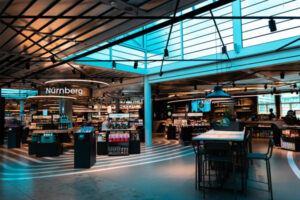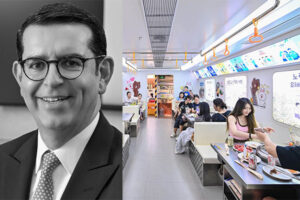By Elia Federici
Rome was a very interesting city for real estate for roughly two decades – from the mid-eighties to around 2005. Most of the shopping centers were built during that period, particularly in the nineties. The overall economic environment, as well as the legal framework, allowed for a stable situation that long-term investors could count on and benefit from. The market was in the hands of local companies that provided good financing conditions and initially kept assets as part of long-term portfolios. Most of that has completely disappeared in the last 15 years.
The major problems that the Roman market has experienced have been numerous. First of all, the local market for housing has shrunk by more than 30% in volume. Second of all, housing prices have gone down by more than 40% in real terms in the last decade. Third of all, most of the local construction and real estate companies have landed themselves in financial trouble, thereby reducing investment dramatically.
Fourth of all, new rules imposed by the National Sovrintendenza, on a regional scale in Lazio, almost put a complete stop to any new zoning plans, for a minimum of five years, before a deal on these rules could be agreed upon by all government bodies involved. Fifth of all, public investment in maintenance and new transport infrastructure has nearly disappeared. Sixth of all, public transportation has, once again, been downsized due to a lack of new investment.
Seventh of all, garbage collection has become erratic, to say the least. Eighth of all, the city has lived through three different administrations in the past five years, and it is currently being run by one that is ruled by a majority that has no prior experience running any major city in the country. Ninth of all, the overall public technical department, responsible for permitting and zoning, has been frustrated. It is largely understaffed as a result of the voluntary departures of the most experienced and senior officers, who were humiliated by the new administration and operated without a mission or a purpose set by the mayor and his staff.
Tenth of all, the slogan of our current city administration, led by the Five Star Movement, a populist party, is “decrescita felice” (“happy reduction”), which serves as a clear sign that their objective definitely does not include the growth of the city. Eleventh of all, no major zoning plans have passed in the city council in the last five years. Twelfth of all, overall security has deteriorated in many parts of the city.
As anyone can see, given this depressing list of issues, the question regarding whether any new development could really be implemented remains.
Perhaps we should take a look at the positive side of the picture: Rome is still a 70-billion-euro-GDP economy. It is still the biggest market for retail in Italy. Its shopping mall penetration has been much lower than that in the north of Italy, where the market is nearly saturated by existing malls. The ring road allows for good transportation all around the city. Rome’s retail activity has been increasing, particularly in sub-prime locations.
Furthermore, local retail companies have the resources to expand. Some national and international brands lack a strong enough hold within the city (i.e., Maison du Monde, the first shop in the city at Gran Roma), which makes them eager to expand their distribution in the city. Some of the existing malls are old and outdated, which has led to a request for new, up-to-date shopping centers that feature good design and accessibility. Potential competition is limited, as is overall output, which allows for good negotiating power. Construction costs are lower than the national average. Local communities, on the outskirts of the city, still require places for aggregation and food courts as services for local residents.
Having stated all of the above, GranRoma Shopping, the most recent shopping center that has been built in the city, by Fresia Group, is an example of success. From its opening on May 16, 2019 to the end of July, more than 900,000 people visited it, resulting in good conversions in terms of sale. GranRoma’s qualities, such as its beautiful view of the Alexandrian Aqueduct, its strong ties with the local community, its easy access via the ring road, and its sleek, modern, and intuitive design all make it easy to attract retailers and shoppers.
The required archaeological investigation, which was done years in advance, as well as a project dedicated to completely ensuring compliance with local regulations were fundamental in achieving the results according to schedule. The experience of the contractors involved and commercialization that includes a mix of international, national, and local established brands was also very important. Of course, a lot of luck was also involved. All of these components made the extremely positive response to the launch of GranRoma possible.
Even with so many things to consider, it is definitely possible to work in real estate in Rome. There are huge opportunities: One must be focused, extremely precise in execution, strictly compliant with the rules, and one must avoid making compromises. One also has to be patient regarding the beginning of the process and very fast regarding execution. A change in the administration, in the reasonably foreseeable future, will see many things progress and many opportunities become reality.






